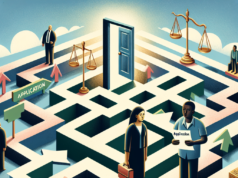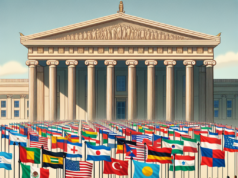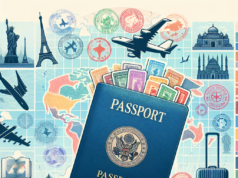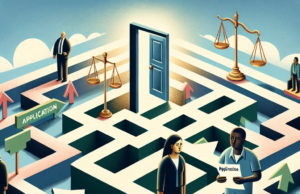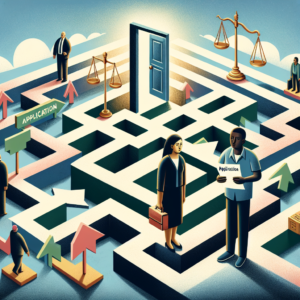
In recent years, immigration policy in the United States has undergone significant transformations, reflecting the evolving political landscape and societal attitudes towards newcomers. These changes have far-reaching implications, not only for immigrants themselves but also for the fabric of American society. As we delve into the historical context, recent legislative reforms, and the broader economic and cultural impacts, it becomes clear that immigration policy is a critical issue that affects us all.
Understanding the Historical Context of Immigration Policies in the United States
The history of immigration policy in the United States is marked by a series of legislative acts and societal shifts that have shaped the nation’s approach to newcomers. From the Chinese Exclusion Act of 1882, which targeted specific ethnic groups, to the Immigration and Nationality Act of 1965, which abolished racial quotas, the U.S. has oscillated between welcoming immigrants and imposing restrictions. The post-9/11 era saw a tightening of immigration controls, reflecting national security concerns. Understanding this historical context is essential to grasp the current immigration landscape, as it reveals patterns of inclusion and exclusion that continue to influence contemporary policy debates.
Key Legislative Changes: A Comprehensive Overview of Recent Immigration Reforms
In the past few years, several key legislative changes have reshaped the immigration landscape in the United States. The Biden administration has sought to reverse many policies implemented during the Trump era, including the controversial “zero tolerance” policy that led to family separations at the border. Recent reforms have focused on pathways to citizenship for undocumented immigrants, the expansion of Temporary Protected Status (TPS) for individuals from countries experiencing crises, and efforts to streamline the asylum process. Additionally, the proposed Dream Act aims to provide legal status to young immigrants brought to the U.S. as children. These legislative changes reflect a shift towards a more humane approach to immigration, although they face significant political opposition.
The Economic Implications of Immigration Policy Shifts on Local Communities
The economic implications of immigration policy shifts are profound, particularly for local communities that rely on immigrant labor. Immigrants play a crucial role in various sectors, including agriculture, construction, and healthcare, often filling labor shortages that are critical to local economies. Recent studies indicate that more inclusive immigration policies can lead to increased economic growth, higher wages, and greater innovation. Conversely, restrictive policies can exacerbate labor shortages and hinder economic recovery, particularly in regions heavily dependent on immigrant workers. As communities grapple with these changes, the economic stakes of immigration policy become increasingly evident.
Social and Cultural Effects: How Immigration Changes Shape Our National Identity
The social and cultural effects of immigration policy changes are significant, influencing the very fabric of American identity. As the U.S. becomes more diverse, the integration of immigrants into society fosters cultural exchange and enriches the national narrative. However, shifts in immigration policy can also lead to tensions and divisions, as some segments of the population may perceive newcomers as a threat to their way of life. The ongoing debates surrounding immigration often reflect deeper societal issues, including racism, xenophobia, and the struggle for social cohesion. Understanding these dynamics is essential for fostering a more inclusive national identity that embraces diversity as a strength rather than a challenge.
The Role of Public Opinion in Shaping Immigration Policy Decisions
Public opinion plays a pivotal role in shaping immigration policy decisions, often swaying lawmakers and influencing the political agenda. Polls indicate that attitudes towards immigration are deeply polarized, with some Americans advocating for more open policies while others call for stricter controls. Media portrayal of immigration issues, coupled with political rhetoric, can significantly impact public perception and, consequently, policy outcomes. Advocacy groups and grassroots movements have emerged to mobilize public support for more humane immigration policies, highlighting the importance of civic engagement in the policymaking process. As public opinion continues to evolve, it will undoubtedly shape the future of immigration policy in the United States.
Future Outlook: Anticipating Further Changes in Immigration Policies and Their Impact
Looking ahead, the future of immigration policy in the United States remains uncertain, with potential for both progressive reforms and further restrictions. As the nation grapples with ongoing challenges such as economic recovery, national security, and social cohesion, immigration will likely remain a contentious issue. The upcoming elections may serve as a pivotal moment for immigration policy, as candidates seek to address the concerns of their constituents. Additionally, demographic shifts and labor market needs will continue to influence policy discussions. Anticipating these changes is crucial for understanding how immigration will shape the future of American society and its economy.
===
In conclusion, the recent shifts in immigration policy reflect a complex interplay of historical context, legislative changes, economic implications, and social dynamics. As the United States navigates these changes, it is essential to recognize the profound impact of immigration on local communities and the nation as a whole. By fostering informed discussions and engaging with diverse perspectives, we can work towards an immigration policy that not only addresses current challenges but also honors the values of inclusivity and opportunity that define the American experience.

